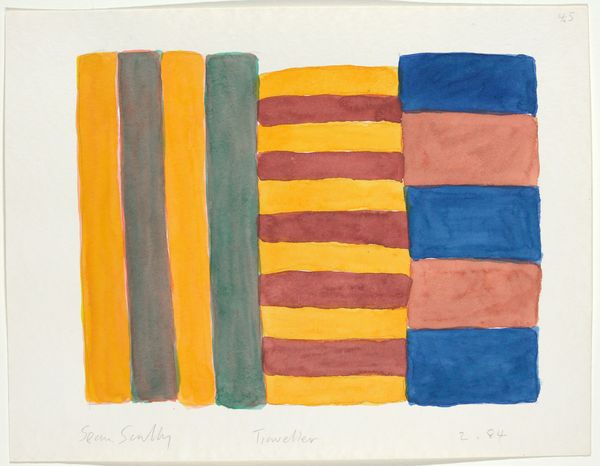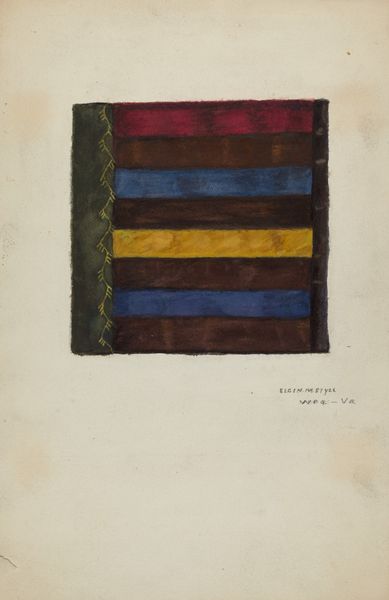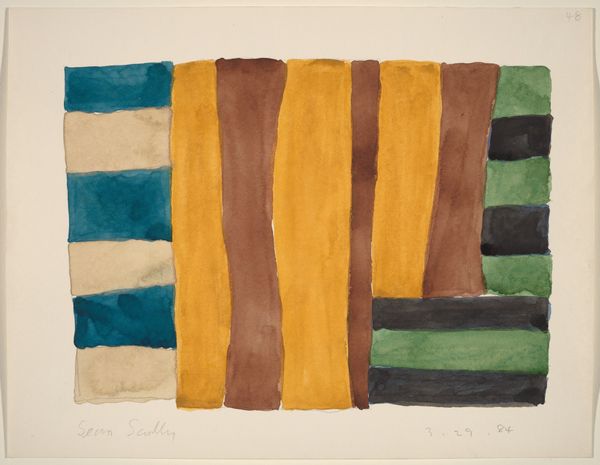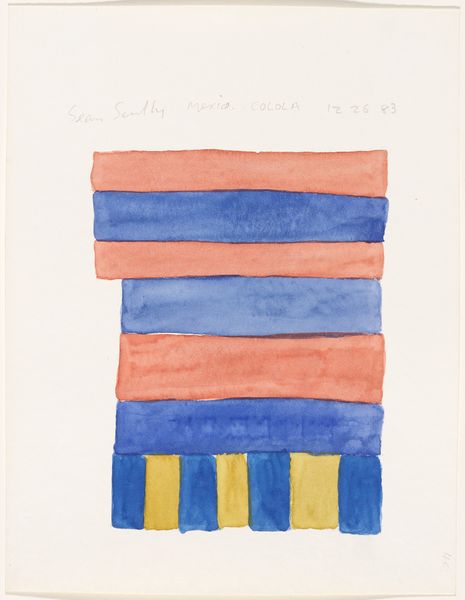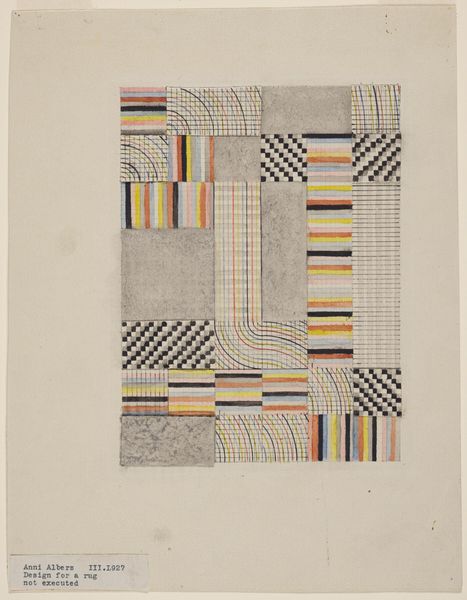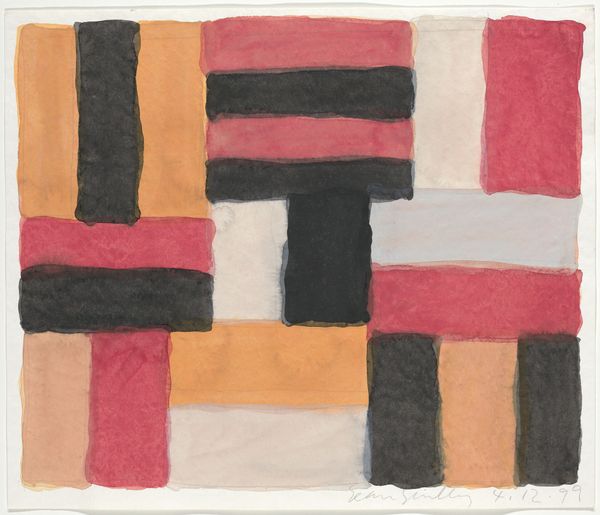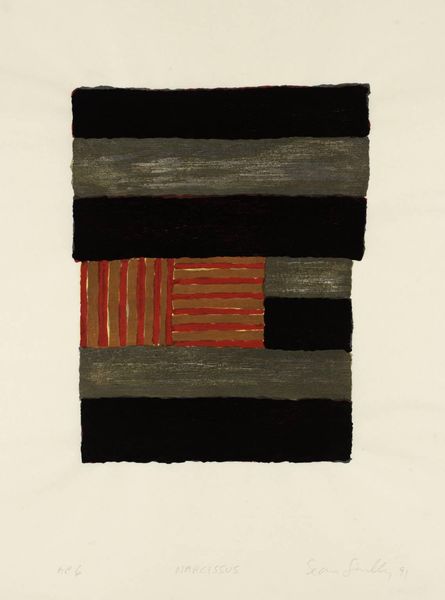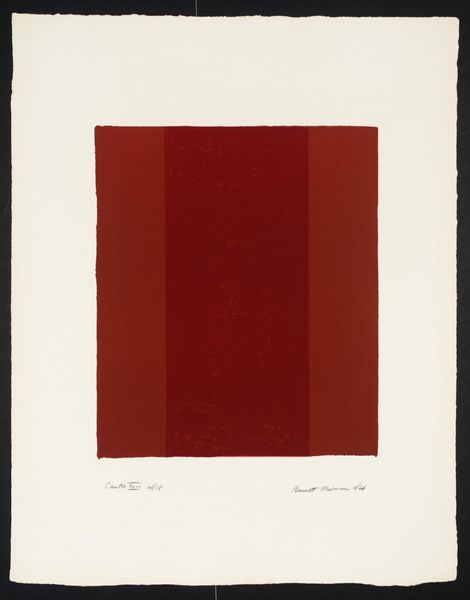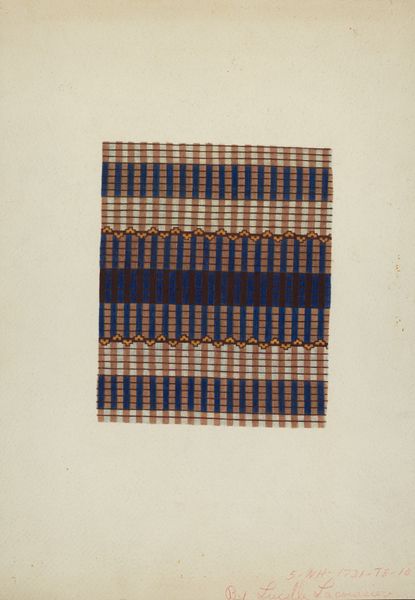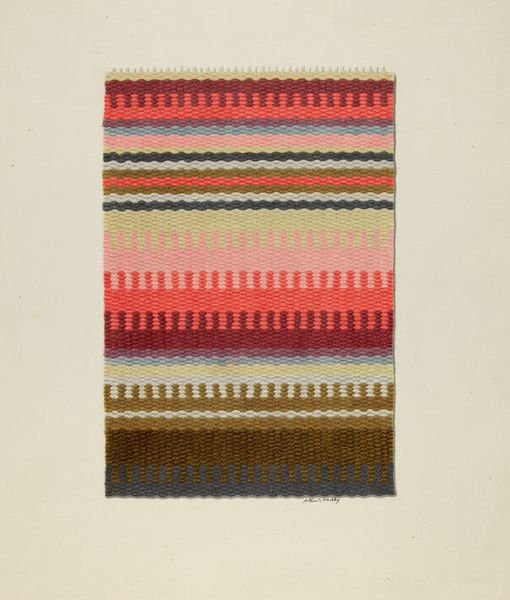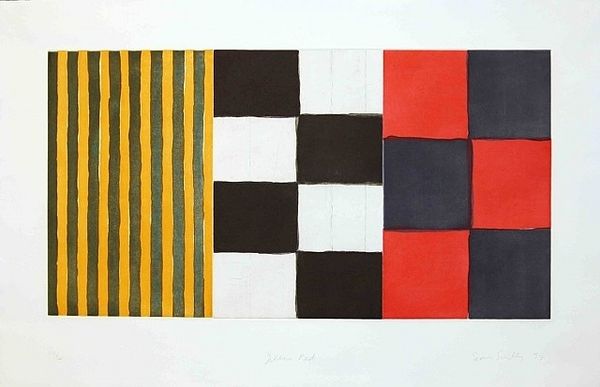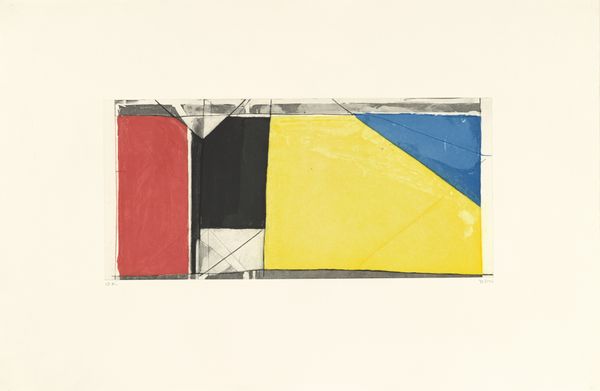
drawing, paper, watercolor
#
drawing
#
paper
#
watercolor
#
geometric
#
abstraction
#
modernism
#
watercolor
Dimensions: sheet: 29.53 × 22.86 cm (11 5/8 × 9 in.)
Copyright: National Gallery of Art: CC0 1.0
Editor: So, this is Sean Scully's "Mexico Calpulli," a watercolor drawing from 1983. It has a definite boldness with the stripes, but also a kind of playful quality because of the washes of color. What catches your eye in this piece? Curator: The title immediately pulls me in. "Calpulli" refers to a pre-Columbian organizational unit, a clan-like group. Given Scully's abstract style, these colored bars may symbolically represent the structured relationships and societal layers of such a community. Notice how he contrasts vertical and diagonal stripes? What feelings do they stir? Editor: The vertical ones feel very stable, while the diagonals are much more dynamic, even a bit rebellious. Curator: Exactly. And think about color. The warmth of the yellow and red… does it suggest something about the cultural identity being referenced? Watercolors often possess transparency and immediacy; in that light, does this suggest cultural transparency or even vulnerability? Editor: I hadn't thought about vulnerability, but it makes sense considering the historical context. The imposition of outside forces potentially destabilizing a structured group. Curator: The stripes also suggest boundaries, maybe even confinement. Are these divisions strengthening or fragmenting this Calpulli? It's interesting to consider what these abstract elements evoke, hinting at cultural resilience or perhaps cultural conflict. Editor: This is making me think about how abstraction isn't necessarily divorced from the real world; it can carry so much cultural memory. Thanks. Curator: Precisely. Seeing how seemingly simple forms communicate such complex layers—that's the beauty of art history.
Comments
No comments
Be the first to comment and join the conversation on the ultimate creative platform.
